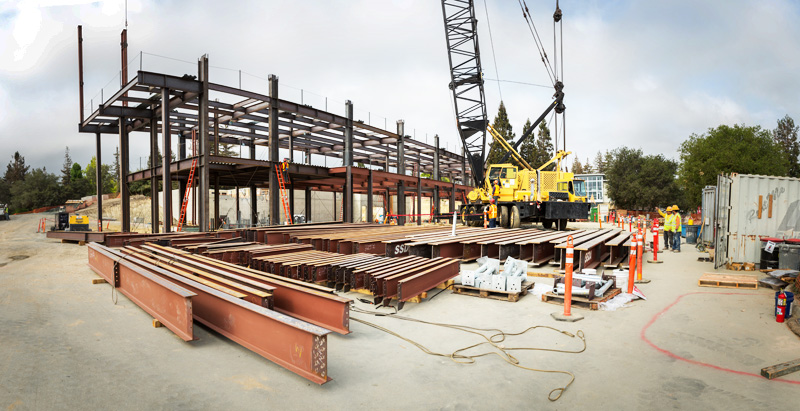Two organizations focused on leadership in the built environment are now working in unison to explore ways public-private partnerships (P3) can be used to achieve high-performance buildings. The National Institute of Building Sciences (NIBS) and the Royal Institution of Chartered Surveyors (RICS) are bringing together international experts on the utilization of P3 to address current government challenges and advance the achievement of a high-performance building stock.
Building owners and policy makers are becoming increasingly interested in the performance of buildings. Whether driven by sustainability, resilience concerns or the desire to protect the investments of taxpayer dollars, government agencies are under increasing pressure to achieve performance-based requirements. These pressures are coming at a time when budgets for new facilities, major capital improvements and long-term maintenance are contracting. Utilizing P3s may help governments overcome challenges related to project financing while driving achievement of performance requirements.
Despite their potential benefits, P3s have not been widely used for building projects in the United States. However, many governments, including Canada, Australia and members of the European Union, have found success in utilizing the approach for facilities such as schools, hospitals and prisons.
“Public-private partnerships can be a great tool for government agencies to improve energy efficiency, resilience and other high-performance building attributes, while reducing the cost of implementation,” said NIBS President Henry L. Green, Hon. AIA. "With the Institute's focus on achieving high-performance buildings and expertise in whole building design, and RICS's expertise in project finance and access to international best practices, we hope to lead the way towards greater use of P3s."
Despite their potential benefits, P3s have not been widely used for building projects in the United States. However, many governments, including Canada, Australia and members of the European Union, have found success in utilizing the approach for facilities such as schools, hospitals and prisons. And some P3 experts and organizations in the field think it’s about time to expand application of the concept to buildings in the U.S.
“The idea of applying the P3 concept more to buildings, and especially building performance, is a potentially promising new avenue in the U.S. for this powerful and creative partnership model,” said Americas Managing Director for RICS Neil Shah. “We are enthusiastic about collaborating on this initiative with NIBS, and combining our extensive resources to see how private industry can help public agencies to maximize energy efficiency and save taxpayer dollars. And we look forward to having more to say on this important subject at next year’s RICS Summit of the Americas.”
Shifting to a greater focus on building performance across the facility life-cycle is a more cost-effective and efficient way to achieve high-performance buildings. At the beginning of the P3 process, the government agency occupying the building identifies the required performance and terms of the project. With the performance requirements defined early, the private partner can then work across the design, construction and operations phases of the project to identify the most cost-effective strategy to assure such requirements are met.
International authority on housing, real estate and infrastructure Sandy Apgar, FRICS, CRE, FIoD, FRSA explained, “P3s enable public authorities and private firms to solve complex building problems that neither could accomplish by working alone. The larger and more complex the project, the more likely it is that a P3 vehicle can leverage government and business resources, and save time and cost over conventional single sector structures.”
Such an approach also encourages the use of emerging best practices (including integrative design processes), adequate training of operations personnel and the sharing of building information.
“Government laboratories have unique research equipment and skills that few businesses can match. And military housing P3s have pioneered award-winning, energy-efficient, environmentally responsible buildings and neighborhoods, through novel site layouts, ‘green’ construction materials, and numerous other technical and operational innovations,” Apgar continued. “On the other hand, businesses have organizational know-how, management systems, and pro-active cultures that are challenging for public agencies to adopt, and could help government agencies integrate and make the most of these private-sector innovations.”
NIBS and RICS are set to begin work on the P3 project this summer and are looking for input from industry experts. The two organizations plan to issue a report on the topic in April 2016 at the RICS Summit of the Americas in Washington, D.C.
Experts interested in participating in this effort can contact Ryan Colker at NIBS [rcolker@nibs.org] or Thomas Pienaar at RICS [tpienaar@rics.org] to learn how get involved.
Related Stories
Codes and Standards | Sep 19, 2024
Navigating the intricacies of code compliance and authorities having jurisdiction
The construction of a building entails navigating through a maze of regulations, permits, and codes. Architects are more than mere designers; we are stewards of safety and navigators of code compliance.
Government Buildings | Sep 17, 2024
OSHA’s proposed heat standard published in Federal Register
The Occupational Safety and Health Administration (OSHA) has published a proposed standard addressing heat illness in outdoor and indoor settings in the Federal Register. The proposed rule would require employers to evaluate workplaces and implement controls to mitigate exposure to heat through engineering and administrative controls, training, effective communication, and other measures.
Codes and Standards | Sep 17, 2024
New California building code encourages, but does not mandate heat pumps
New California homes are more likely to have all-electric appliances starting in 2026 after the state’s energy regulators approved new state building standards. The new building code will encourage installation of heat pumps without actually banning gas heating.
Codes and Standards | Sep 17, 2024
ASHRAE’s first group of certified decarbonization professionals announced
ASHRAE recently announced its inaugural cohort of Certified Decarbonization Professionals (CDPs). Individuals who earned this designation demonstrate competency to assess, analyze, and develop effective and sustainable strategies to reduce or eliminate the life-cycle carbon footprint of buildings.
Education Facilities | Sep 16, 2024
Hot classrooms, playgrounds spur K-12 school districts to go beyond AC for cooling
With hotter weather occurring during the school year, school districts are turning to cooling strategies to complement air conditioning. Reflective playgrounds and roads, cool roofs and window films, shade structures and conversion of asphalt surfaces to a natural state are all being tried in various regions of the country.
Adaptive Reuse | Sep 12, 2024
White paper on office-to-residential conversions released by IAPMO
IAPMO has published a new white paper titled “Adaptive Reuse: Converting Offices to Multi-Residential Family,” a comprehensive analysis of addressing housing shortages through the conversion of office spaces into residential units.
Legislation | Sep 9, 2024
Efforts to encourage more housing projects on California coast stall
A movement to encourage more housing projects along the California coast has stalled out in the California legislature. Earlier this year, lawmakers, with the backing of some housing activists, introduced a series of bills aimed at making it easier to build apartments and accessory dwelling units along California’s highly regulated coast.
Office Buildings | Sep 6, 2024
Fact sheet outlines benefits, challenges of thermal energy storage for commercial buildings
A U.S. Dept. of Energy document discusses the benefits and challenges of thermal energy storage for commercial buildings. The document explains how the various types of thermal energy storage technologies work, where their installation is most beneficial, and some practical considerations around installations.
Office Buildings | Sep 5, 2024
Office space downsizing trend appears to be past peak
The office downsizing trend may be past its peak, according to a CBRE survey of 225 companies with offices in the U.S., Canada, and Latin America. Just 37% of companies plan to shrink their office space this year compared to 57% last year, the survey found.
Codes and Standards | Sep 3, 2024
Atlanta aims to crack down on blighted properties with new tax
A new Atlanta law is intended to crack down on absentee landlords including commercial property owners and clean up neglected properties. The “Blight Tax” allows city officials to put levies on blighted property owners up to 25 times higher than current millage rates.

















